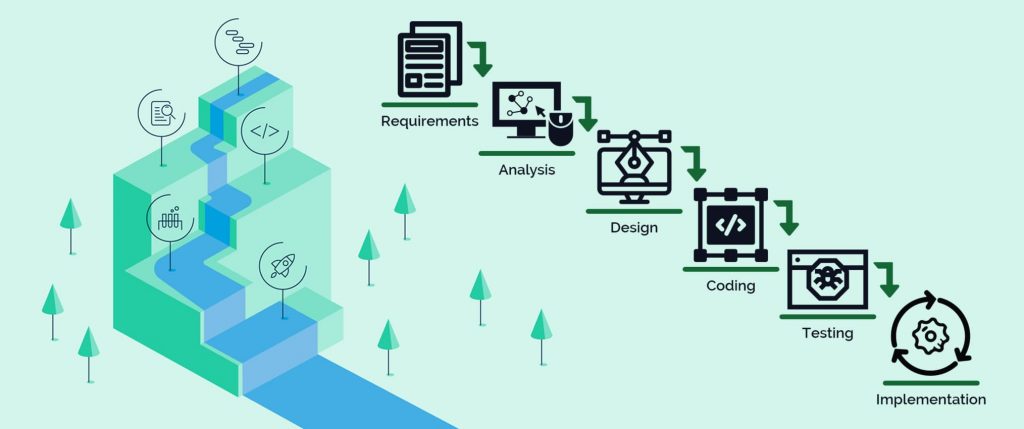
Agile and waterfall are two obvious project management methodologies. Agile methodology is youthful than waterfall and very effective in today’s energetic dynamic software development world.
Can agile learn from waterfall management? Definitely – decades of waterfall project management established some tools and processes that agilists would benefit from, exceptionally when it comes to project budgeting.
Agile and Waterfall Project Management
Waterfall project management is linear and is also known as artificial intelligence development. It separates assignments into discrete phases that appear in a sequence. PMs plan the project upfront and stick to the presumptions, as well as work on the phase by phase.
On the other hand, agile project management, iterative as well as divides a particular project into sprints. The sprints are interconnected and influence each other. Agile is reactive and thus effective at accommodating changes.
Waterfall’s Predictive Approach – Planning Upfront
A transparent project budget is the need of the majority of your clients. So, you need to cling to it. In addition to this, agile projects are destined to change, so setting the right estimate may be problematic. As a result, as the project work advances, risk, uncertainty, and influence on the project drop. Anyway, the adjacent you are to completing the project, the higher the cost of solving problems that appear.
Is there an effective way to maximize influence and minimize the unexpected costs of solving possible problems? Yes- there is a predictive approach in waterfall project management. This predictive approach focuses on planning upfront to translate known risks into time or cost. Thus, groom you for the unanticipated by securing extra budget or time for dealing with unfamiliar risks.
Setting contingency buffers
It is necessary to know project risks to create a reliable budget. Setting a contingency buffer to cover potential costs is the one effective way to minimize the risks. Outline the risks and evaluate them concerning cost and probability. This would capitulate the total value of your contingency buffer which should keep your project on the safe and protected side.
Removing project redundancies from the scope
The agile project management approach starts with a certain period or specific budget and adjusts the scope accordingly. It may be challenging to minimize the scope of the project to fit the client’s timeline or budget. Contrarily, in the waterfall project management approach, the scope dictates budget, time, as well as resource allocation.
Smart tools to manage scope
Waterfall project management methodology has few tools to manage scope. Deliverables x Requirements matrix is one such tool. This tool enables you to map deliverables against specific requirements, helping you realize which deliverables are unnecessary (do not meet any of the demands) and spot if a deliverable is missing (when one or more of the needs are not covered). Therefore, you can focus on delivering only the essentials and skip the nice-to-haves.
Applying waterfall project management budgeting to agile
Even if you are working to estimate the cost of a whole project or a single task, the main is to divide work into stages and individually approximate each stage. A glance at project costs through the viewpoint of the following phases can help control variability. The initial days of the project are crucial for the successful delivery as well as discovery. The cost of implementing a product change during the initial design phase is much lower than during the development phase, so make sure you:
Chart the risks and create contingency plans
Take enough time to divide work into smaller chunks
Approximate the work with unreliability priced in
Observe your plan so you can see the discrepancies between reality and plan early
Act when your influence is still high
The crucial role of a project manager
PM of business transformation services plays a crucial and integrated role in making the predictions. A project manager integrates clients’ requirements with the team to achieve the goal. Since the project evolves the client needs to make informed decisions, communication is the key to success. The waterfall management matrix will move you from mapping to taking action. You began to think more deliberately about your relations with stakeholders and you create an action plan for each relationship.
Using waterfall in agile teams
Waterfall project management is much rigid compared to agile. This is because it takes a fixed attitude to budget and product scope 0nce they are set. Agile welcomes change and effectively responds to them. Even so, agile could use some strategies and tools used by waterfall methodology, mainly when it comes to budget setting. Project managers ease the communication between all stakeholders and make certain the agreement is reached on requirements.
Conclusion
When organizing processes for software development and business transformation services, the waterfall and agile project management principles are among the most common approaches. But choosing between these two requires a strong understanding of how each provides fixed advantages to the company.
At Allianze Infosoft, a top Artificial Intelligence and software development company we believe engagement can be useful in many different ways. Our expert team is adept in artificial intelligence and software development. An advanced pitch deck prepared by our company designers is indeed a game-changer for you.
Enterprise clients may find it handy to pick out a specific strategy on how they want their internal relationships to grow. Looking for effective business transformation services? Let us know – we’re flexible and eager to help.
